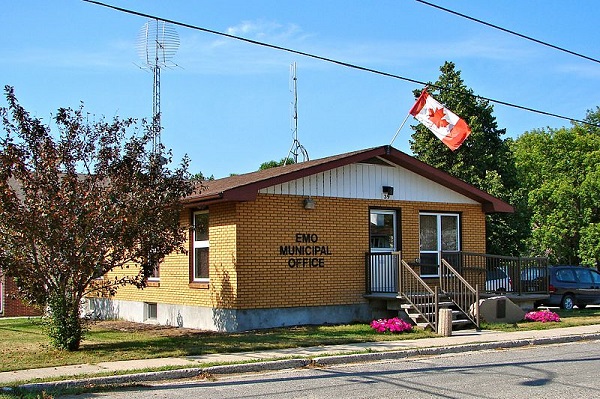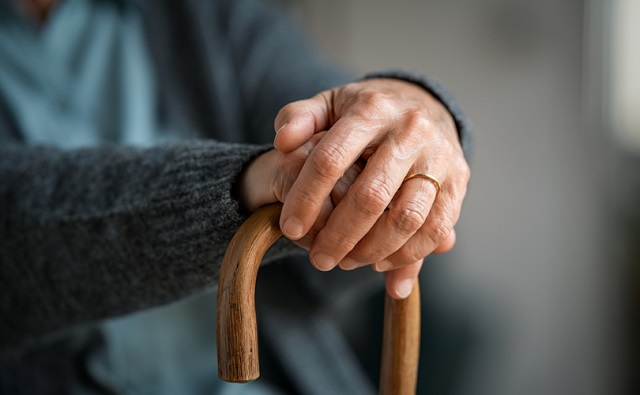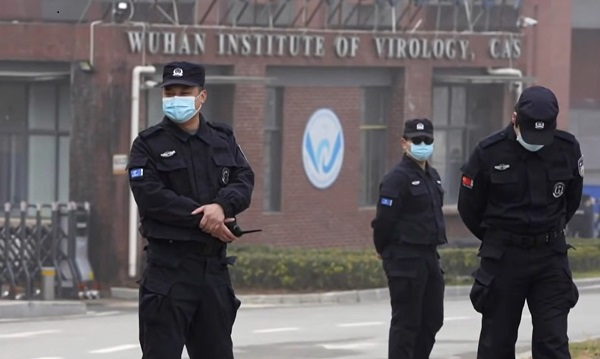National
Canadian town appeals ruling that forces them to pay LGBT group over ‘pride’ flag dispute

From LifeSiteNews
The irony of the ruling is that Emo’s town hall doesn’t even have a flagpole
A Canadian town has announced it will seek a “judicial review” regarding a decision that saw it being mandated by a tribunal to pay an LGBT group thousands of dollars because it refused to cave to activists’ demands by declaring June “Pride Month” and flying the related rainbow flag.
In a media statement Thursday, the town of Emo, Ontario, said it has “decided to seek judicial review of the decision of the Human Rights Tribunal of Ontario. As the matter is proceeding to the Divisional Court, we will not be commenting further at this time.”
The town noted that it wished “to state that it made a Declaration of Equality in 2022, which remains in effect today.”
“The Township recognizes the dignity and worth of all people, as well as the barriers of discrimination and disadvantage faced by human rights protected groups, including members of the LGBTQ2+ community,” said the town in its 2022 declaration.

As reported by LifeSiteNews, last month Mayor Harold McQuaker of Emo, Ontario, was ordered by an Ontario Human Rights Tribunal to pay local LGBT activist group Borderland Pride $5,000 for refusing to celebrate the LGBT agenda during the month of June. The town was also ordered to pay $10,000.
Specifically, the mayor and town had refused to cave to demands to fly the LGBT “Pride flag” and declare the month of June to be “Pride Month.”
After the mayor refused to pay, his bank account appears to have been garnished to pay for damages ordered against him by the tribunal.
McQuaker had publicly protested the tribunal’s orders, calling them a form of “extortion.” In a vulgar Facebook post, Borderland Pride claimed they were successful in forcing money from the mayor via the garnishing of his bank funds.
“Sure, sex is great, but have you ever garnished your mayor’s bank account after he publicly refused to comply with a Tribunal’s order to pay damages?” wrote the group on Facebook.
McQuaker previously had told the Toronto Sun, “I utterly refuse to pay the $5,000 because that’s extortion” and said he would not undergo the Ontario Human Rights Commission re-education course.
Ontario adjudicator Karen Dawson wrote in her decision against McQuaker that “$15,000 is an appropriate level of compensation for Borderland Pride’s injury to dignity, feelings and self-respect.”
The irony of the ruling is that Emo’s town hall doesn’t even have a flagpole.
Emo is not the only town in Canada that has recently banned the flying of “Pride” flags from municipal buildings.
As reported by LifeSiteNews, residents of the Canadian town of Barrhead, Alberta, recently voted in a solid majority to pass a bylaw that will in effect ban pro-LGBT “Pride” themed designs from being displayed on public infrastructure, including such flags on government buildings and rainbow painted crosswalks.
Residents in the Alberta town of Westlock likewise passed a bylaw that bans all non-governmental flags from municipal buildings and mandates that crosswalks only be painted in the standard white-striped pattern.
The LGBT indoctrination in Canadian cities and towns via “Pride month,” which often includes flags and painted crosswalks, has been described by LifeSiteNews columnist Jonathon Van Maren as “not a ‘celebration of Pride,’” but as “an assertion of ownership, a declaration of dominance” over “public spaces.”
Van Maren recently observed celebrated the Emo mayor, writing, “Harold McQuaker isn’t having any of it (LGBT activists demands). And we need more like him.”
2025 Federal Election
Polls say Canadians will give Trump what he wants, a Carney victory.

Regarding Canada, President Trump has said two things during this election campaign.
First, Trump said he wants Canada to become the 51st state. He’s not joking. He’s said it repeatedly.
Second, President Trump said he prefers to negotiate with Carney. He’s never taken that back either.
These two statements are connected. All Trump has to do is wait. He’s older and fortunately for him, he won’t have to wait long.
A Carney government will continue to block oil and gas development. When Carney speaks of national energy projects he’s referring to his renewable energy pipedream. Canadians will watch helplessly as the Carney government spends untold billions in a fruitless attempt to kill the oil and gas industries and force a net zero energy transition.
Even Russia and China in their wildest national adventures never tried to forcibly transition its entire energy system. It took the Soviet Union about 80 years to collapse as an economic structure. But the Soviets never attempted anything this ridiculous.
Somehow we’ve attempted to detach accessible and affordable energy from economic viability. If we think affordability is an issue now (and it is our top issue), just wait. The election hasn’t even happened and jobs backed by billions of our tax dollars are already disappearing.
The US economy with it’s affordable energy will look like Shangri-La compared to Canada. If you think this is hyperbolic please take a quick look at the Prime Ministers own Privy Council report which he has understandably neglected to speak about during the campaign. This is a report from the PM’s own planners which states “social stagnation and downward mobility are plausible elements of the future” and goes as far to suggest that desperate “people may start to hunt, fish and forage on public lands and waterways without reference to regulations.”
For those who believe Carney’s approach can be successful please note the collapse of GFANZ. Carney was chairman of the Glasgow Financial Alliance for Net Zero. Those who committed to GFANZ agreed to kill investment in non renewable energy, funding only renewable replacements. Members of GFANZ hoped to compress a transition that naturally takes somewhere between one hundred and one thousand years into a decade or two.
By declaring a National Energy Emergency on his first day in office, Trump killed GFANZ in the US. In short order major investment firms and all the major US banks left the alliance. While Carney and other pretenders try to keep the GFANZ dream alive, their economies will compete with China’s cheap labour and USA’s cheap and abundant energy. GFANZ will survive in the short term only by the sacrifice of the citizen taxpayers of participating nations.
The reality is a Carney victory only strengthens Trump’s position. Trump wants Canada’s resources and a Carney government sets the table for that to happen. Not in a negotiation over trade disputes in the fall of 2025, but after Canada’s utter economic collapse a few years later.
There are people in Canada, definitely in Alberta who actually like the idea of becoming an American state. One of them told me he will vote for Carney to accelerate the conditions that make it more feasible. The real irony is that the Elbows Up crowd are the most adamantly opposed to future US statehood. Ironic because they’re doing the work Trump wants them to by putting Carney in charge of our economy. Canada seems poised to put the wrong general in charge at the most critical time.
This is not so much a battle against left and right, liberal and conservative as it is a last stand by the shrinking number of Canadians who still trust corporate media. While corporate media stir up the anti Trump narrative, Canadians who’ve moved on to the new independent medias concern themselves with other issues. One of these groups don’t answer polling questions. Maybe it will turn out Poilievre’s rallies are the real measuring stick. If you love Canada you better hope so.
If there’s one thing we know about the unpredictable US President, it’s that he will predictably say whatever he wants to. Why has President Trump not said he’d prefer to work with another conservative? Because he doesn’t care about his fellow conservative thinkers in Canada as much as he cares about a future North American-wide USA. Giving Trump a Carney victory? God help Canada. We’re going to need it.
2025 Federal Election
Study links B.C.’s drug policies to more overdoses, but researchers urge caution

By Alexandra Keeler
A study links B.C.’s safer supply and decriminalization to more opioid hospitalizations, but experts note its limitations
A new study says B.C.’s safer supply and decriminalization policies may have failed to reduce overdoses. Furthermore, the very policies designed to help drug users may have actually increased hospitalizations.
“Neither the safer opioid supply policy nor the decriminalization of drug possession appeared to mitigate the opioid crisis, and both were associated with an increase in opioid overdose hospitalizations,” the study says.
The study has sparked debate, with some pointing to it as proof that B.C.’s drug policies failed. Others have questioned the study’s methodology and conclusions.
“The question we want to know the answer to [but cannot] is how many opioid hospitalizations would have occurred had the policy not have been implemented,” said Michael Wallace, a biostatistician and associate professor at the University of Waterloo.
“We can never come up with truly definitive conclusions in cases such as this, no matter what data we have, short of being able to magically duplicate B.C.”
Jumping to conclusions
B.C.’s controversial safer supply policies provide drug users with prescription opioids as an alternative to toxic street drugs. Its decriminalization policy permitted drug users to possess otherwise illegal substances for personal use.
The peer-reviewed study was led by health economist Hai Nguyen and conducted by researchers from Memorial University in Newfoundland, the University of Manitoba and Weill Cornell Medicine, a medical school in New York City. It was published in the medical journal JAMA Health Forum on March 21.
The researchers used a statistical method to create a “synthetic” comparison group, since there is no ideal control group. The researchers then compared B.C. to other provinces to assess the impact of certain drug policies.
Examining data from 2016 to 2023, the study links B.C.’s safer supply policies to a 33 per cent rise in opioid hospitalizations.
The study says the province’s decriminalization policies further drove up hospitalizations by 58 per cent.
“Neither the safer supply policy nor the subsequent decriminalization of drug possession appeared to alleviate the opioid crisis,” the study concludes. “Instead, both were associated with an increase in opioid overdose hospitalizations.”
The B.C. government rolled back decriminalization in April 2024 in response to widespread concerns over public drug use. This February, the province also officially acknowledged that diversion of safer supply drugs does occur.
The study did not conclusively determine whether the increase in hospital visits was due to diverted safer supply opioids, the toxic illicit supply, or other factors.
“There was insufficient evidence to conclusively attribute an increase in opioid overdose deaths to these policy changes,” the study says.
Nguyen’s team had published an earlier, 2024 study in JAMA Internal Medicine that also linked safer supply to increased hospitalizations. However, it failed to control for key confounders such as employment rates and naloxone access. Their 2025 study better accounts for these variables using the synthetic comparison group method.
The study’s authors did not respond to Canadian Affairs’ requests for comment.
Subscribe for free to get BTN’s latest news and analysis – or donate to our investigative journalism fund.
Correlation vs. causation
Chris Perlman, a health data and addiction expert at the University of Waterloo, says more studies are needed.
He believes the findings are weak, as they show correlation but not causation.
“The study provides a small signal that the rates of hospitalization have changed, but I wouldn’t conclude that it can be solely attributed to the safer supply and decrim[inalization] policy decisions,” said Perlman.
He also noted the rise in hospitalizations doesn’t necessarily mean more overdoses. Rather, more people may be reaching hospitals in time for treatment.
“Given that the [overdose] rate may have gone down, I wonder if we’re simply seeing an effect where more persons survive an overdose and actually receive treatment in hospital where they would have died in the pre-policy time period,” he said.
The Nguyen study acknowledges this possibility.
“The observed increase in opioid hospitalizations, without a corresponding increase in opioid deaths, may reflect greater willingness to seek medical assistance because decriminalization could reduce the stigma associated with drug use,” it says.
“However, it is also possible that reduced stigma and removal of criminal penalties facilitated the diversion of safer opioids, contributing to increased hospitalizations.”
Karen Urbanoski, an associate professor in the Public Health and Social Policy department at the University of Victoria, is more critical.
“The [study’s] findings do not warrant the conclusion that these policies are causally associated with increased hospitalization or overdose,” said Urbanoski, who also holds the Canada Research Chair in Substance Use, Addictions and Health Services.
Her team published a study in November 2023 that measured safer supply’s impact on mortality and acute care visits. It found safer supply opioids did reduce overdose deaths.
Critics, however, raised concerns that her study misrepresented its underlying data and showed no statistically significant reduction in deaths after accounting for confounding factors.
The Nguyen study differs from Urbanoski’s. While Urbanoski’s team focused on individual-level outcomes, the Nguyen study analyzed broader, population-level effects, including diversion.
Wallace, the biostatistician, agrees more individual-level data could strengthen analysis, but does not believe it undermines the study’s conclusions. Wallace thinks the researchers did their best with the available data they had.
“We do not have a ‘copy’ of B.C. where the policies weren’t implemented to compare with,” said Wallace.
B.C.’s overdose rate of 775 per 100,000 is well above the national average of 533.
Elenore Sturko, a Conservative MLA for Surrey-Cloverdale, has been a vocal critic of B.C.’s decriminalization and safer supply policies.
“If the government doesn’t want to believe this study, well then I invite them to do a similar study,” she told reporters on March 27.
“Show us the evidence that they have failed to show us since 2020,” she added, referring to the year B.C. implemented safer supply.
This article was produced through the Breaking Needles Fellowship Program, which provided a grant to Canadian Affairs, a digital media outlet, to fund journalism exploring addiction and crime in Canada. Articles produced through the Fellowship are co-published by Break The Needle and Canadian Affairs.
Our content is always free – but if you want to help us commission more high-quality journalism,
consider getting a voluntary paid subscription.
-

 2025 Federal Election6 hours ago
2025 Federal Election6 hours agoStudy links B.C.’s drug policies to more overdoses, but researchers urge caution
-

 Alberta1 day ago
Alberta1 day agoRed Deer Justice Centre Grand Opening: Building access to justice for Albertans
-

 conflict1 day ago
conflict1 day agoMarco Rubio says US could soon ‘move on’ from Ukraine conflict: ‘This is not our war’
-

 Business22 hours ago
Business22 hours agoChinese firm unveils palm-based biometric ID payments, sparking fresh privacy concerns
-

 2025 Federal Election1 day ago
2025 Federal Election1 day agoPolice Associations Endorse Conservatives. Poilievre Will Shut Down Tent Cities
-

 Business1 day ago
Business1 day agoTrump: China’s tariffs to “come down substantially” after negotiations with Xi
-

 International2 days ago
International2 days agoNew York Times publishes chilling new justification for assisted suicide
-

 2025 Federal Election2 days ago
2025 Federal Election2 days agoMark Carney Wants You to Forget He Clearly Opposes the Development and Export of Canada’s Natural Resources







